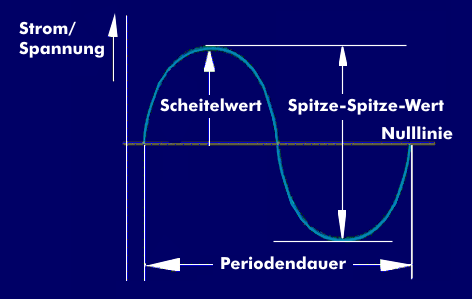alternating current (AC)
Alternating current is electric current that changes its amplitude, polarity and phase. In English, alternating current is called alternating current( AC). It is described by a repeating periodic waveform or pulse shape.
In terms of low- voltage mains current, the change over time takes the form of a sinusoidal oscillation rotating around a zero line. In this function, the alternating current rises sinusoidally from zero to the positive peak value, then falls sinusoidally, crosses the zero line, continues to fall to the negative peak value, and then rises to zero. This repetitive function repeats itself regularly. Of course, alternating current could also have another function. For example, a half-wave function as it appears after rectification.
In addition to the two peak values, sinusoidal alternating current is characterized by the peak-to-peak value, which is equal to the sum of the peak values, by the rms value, which is equal to 0.7 times the peak value, by the average value, which is zero for a sinusoidal function, and by the period.
As far as the frequency or the period is concerned, the term alternating current applies to all frequencies. However, it is mainly used for the mains frequency, which in Germany is 50 Hz, corresponding to a period of 20 ms. In the USA and Canada it is 60 Hz.

